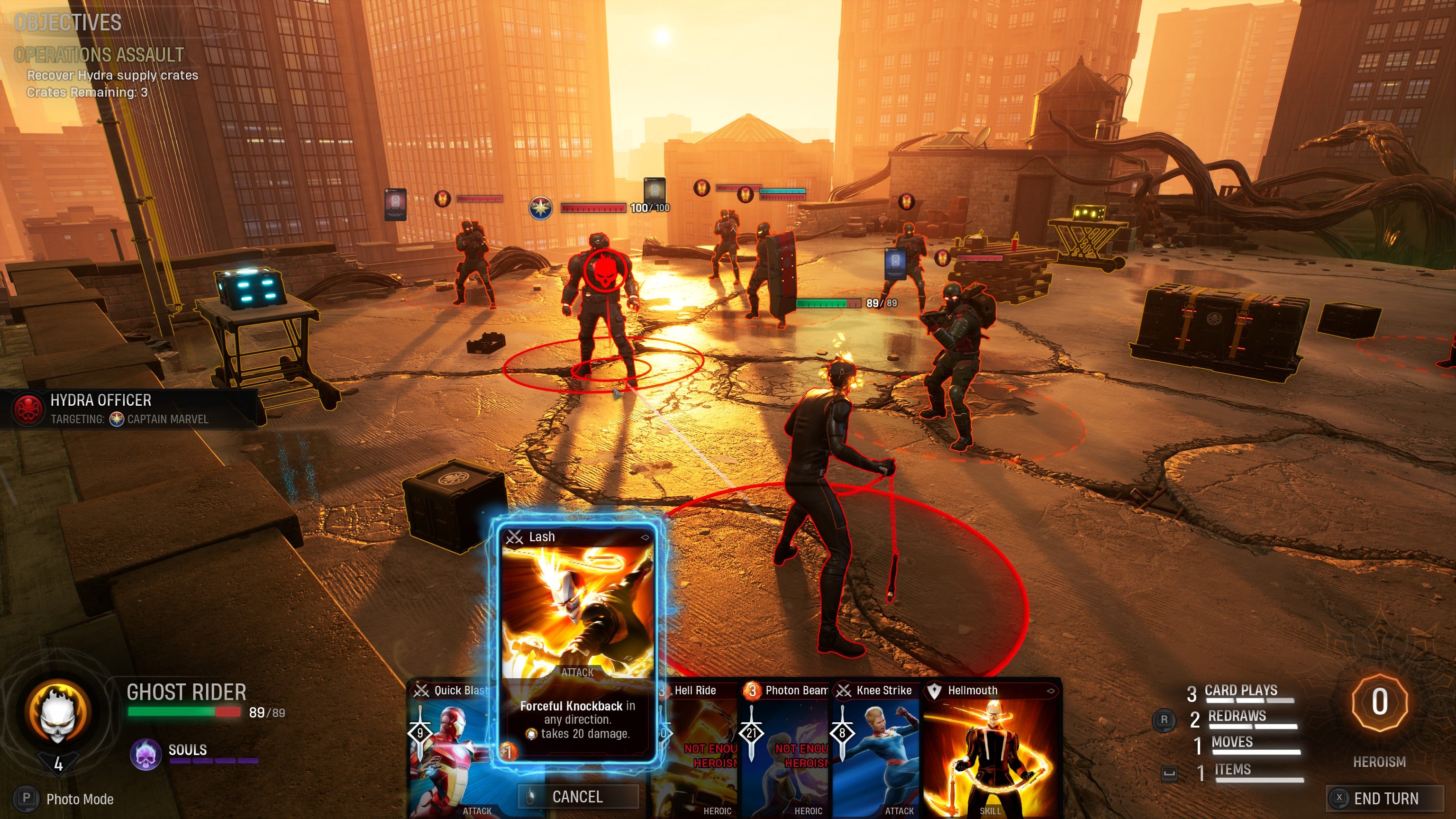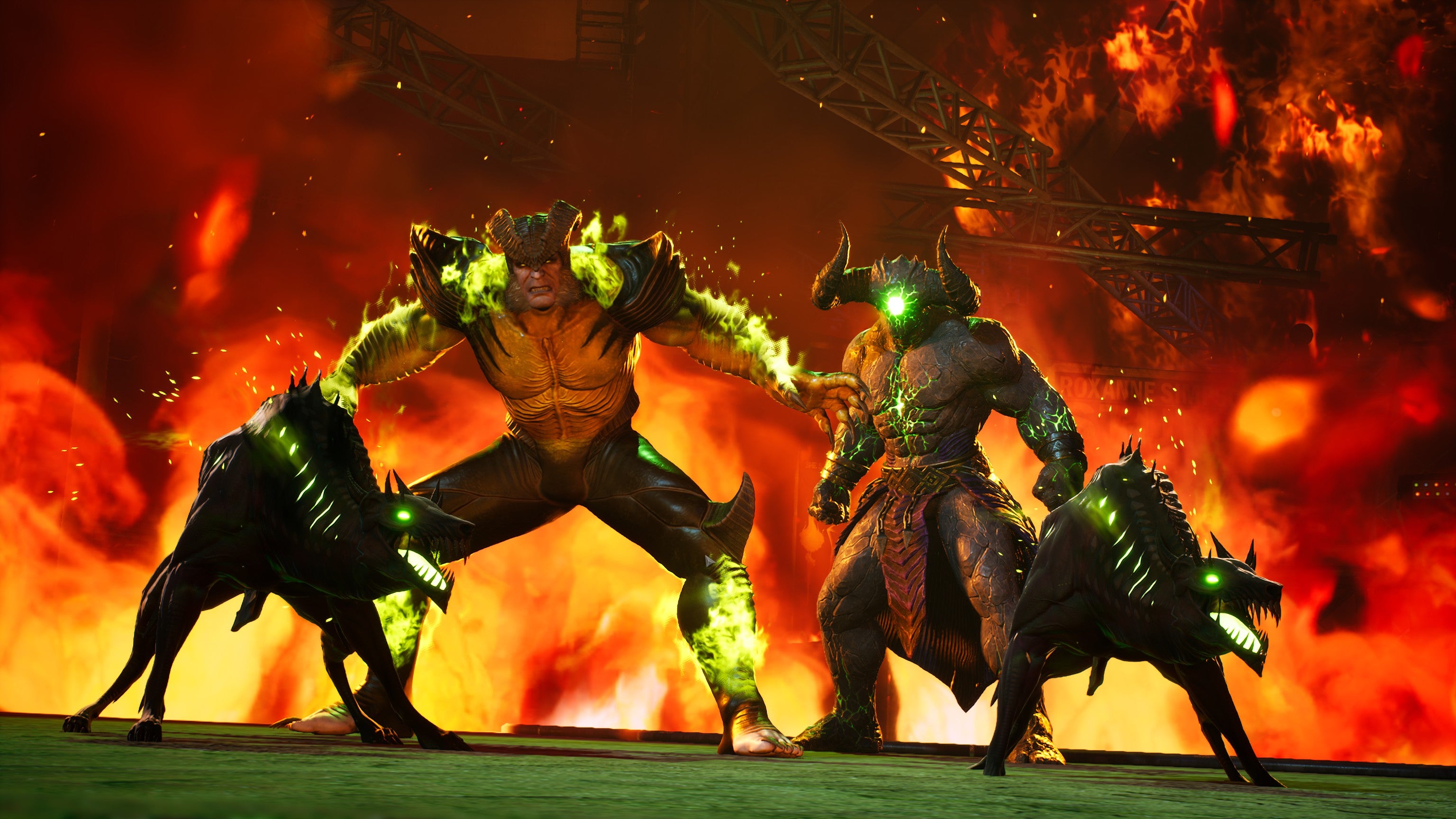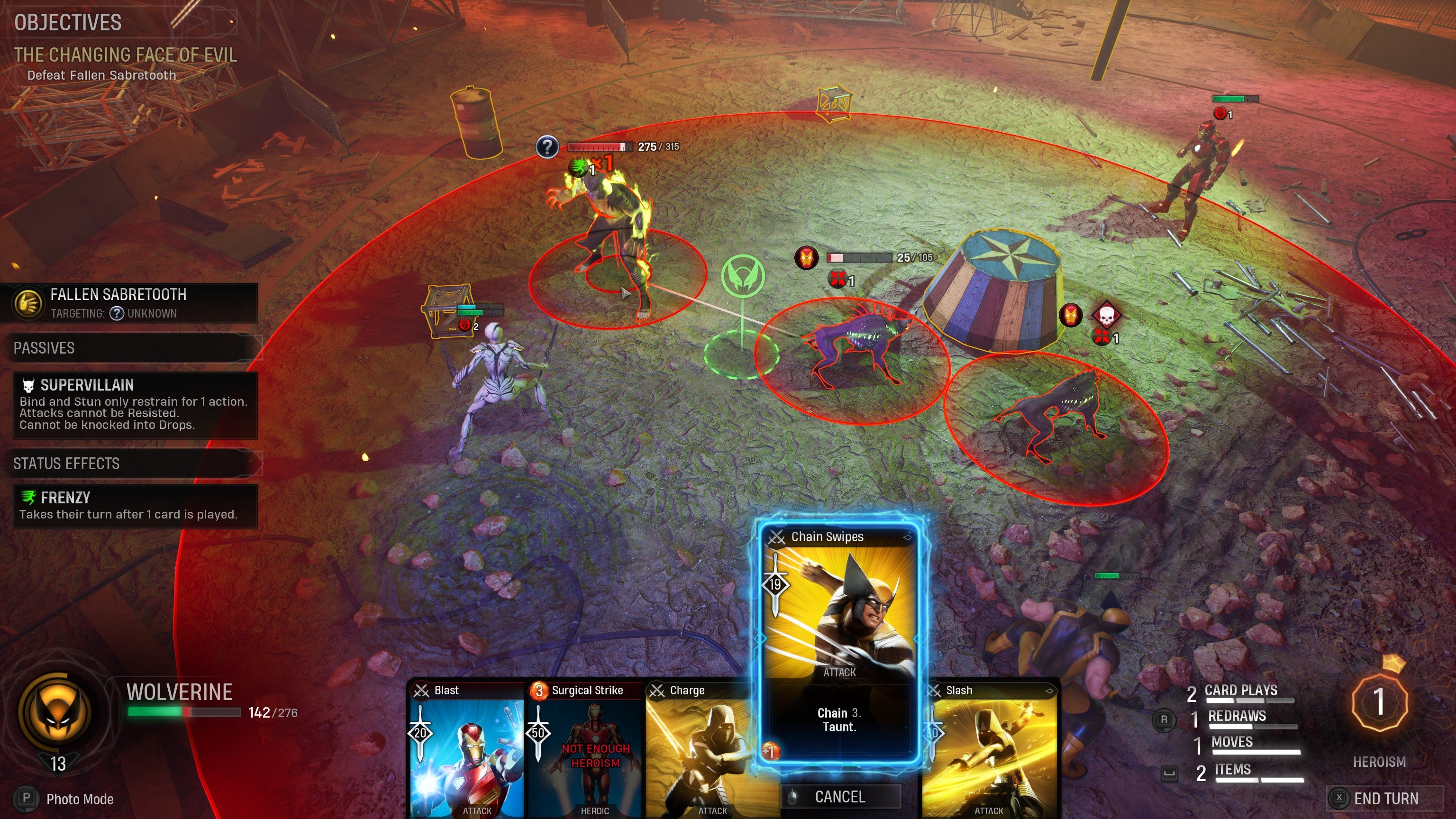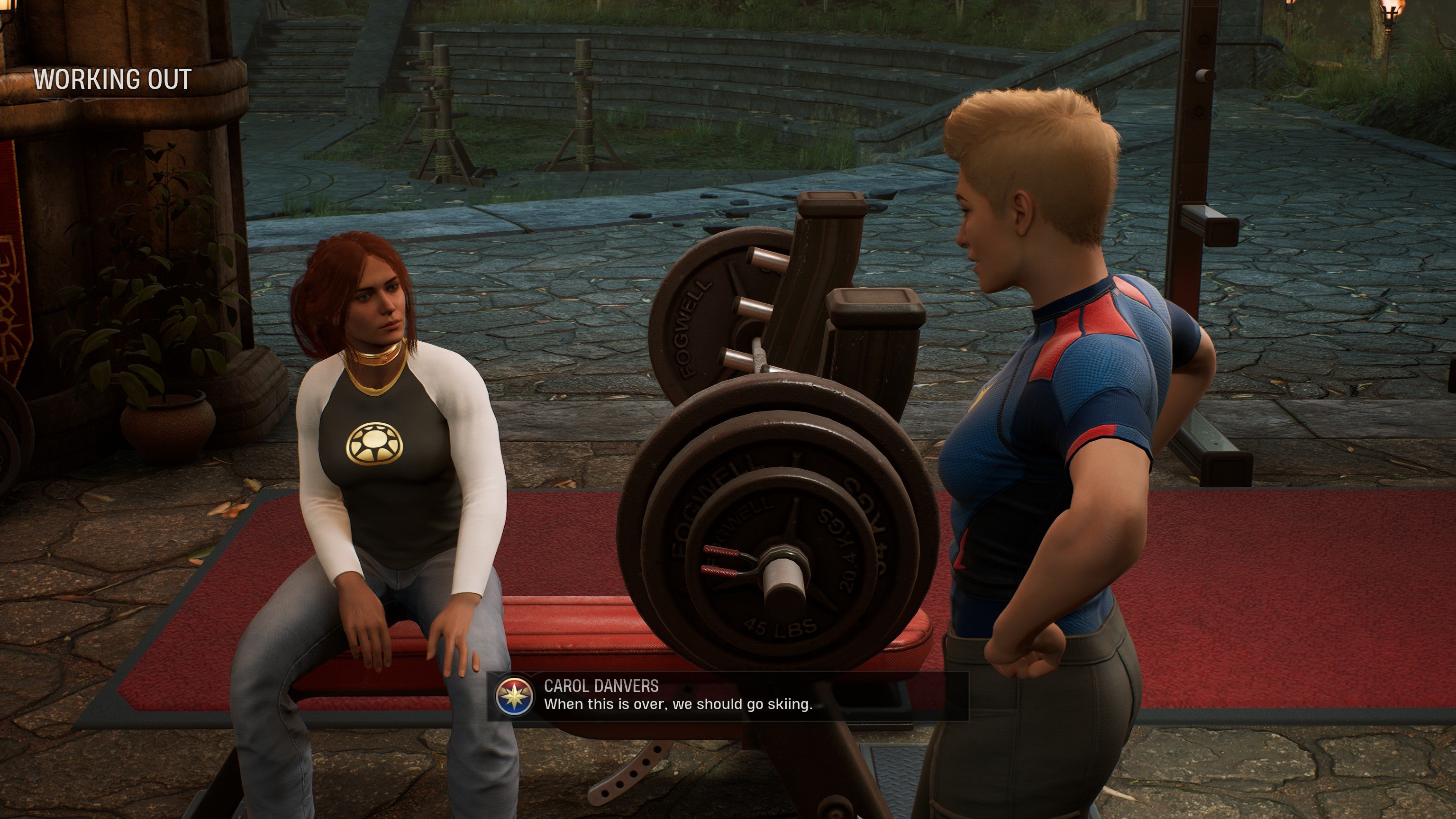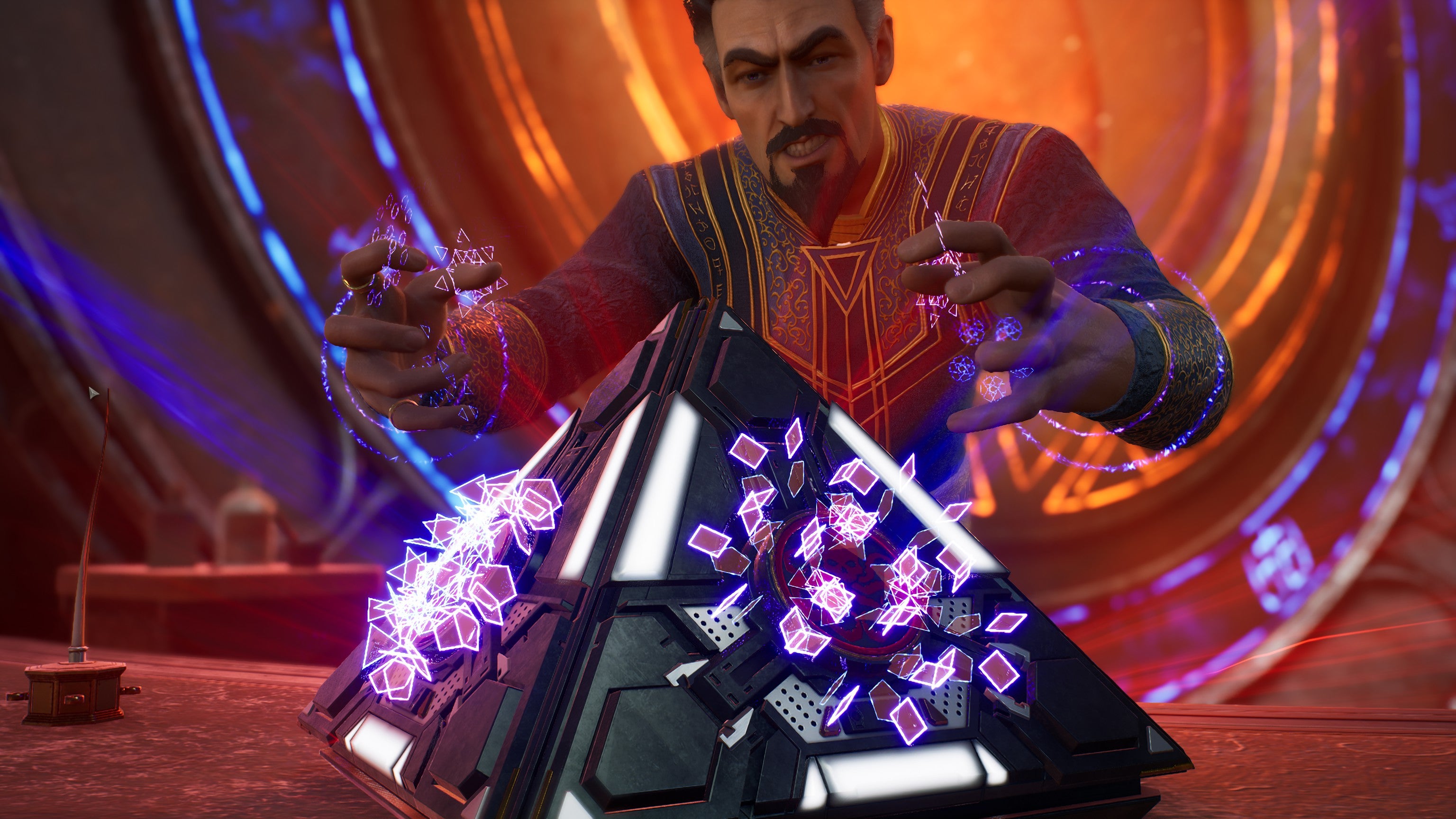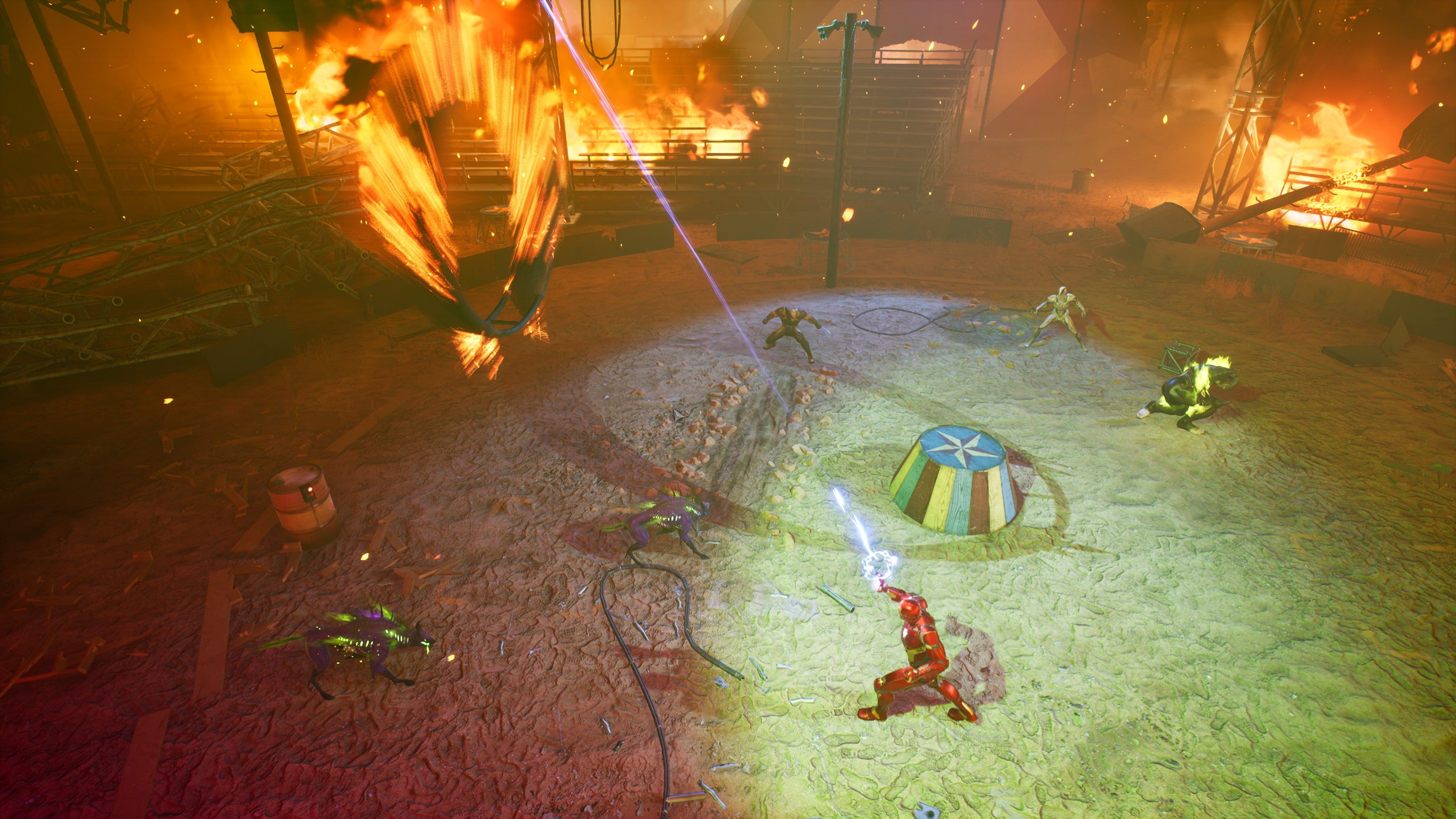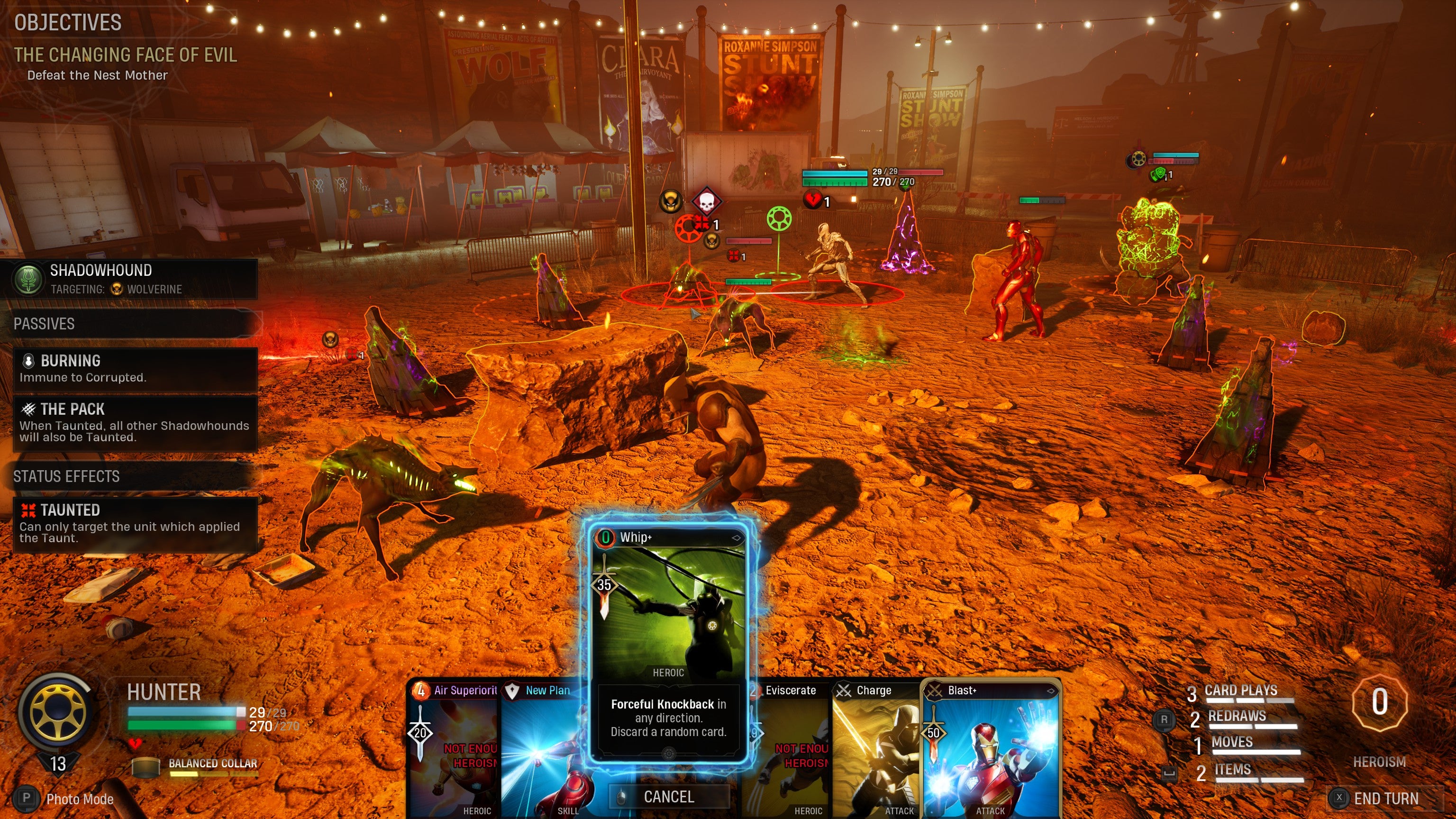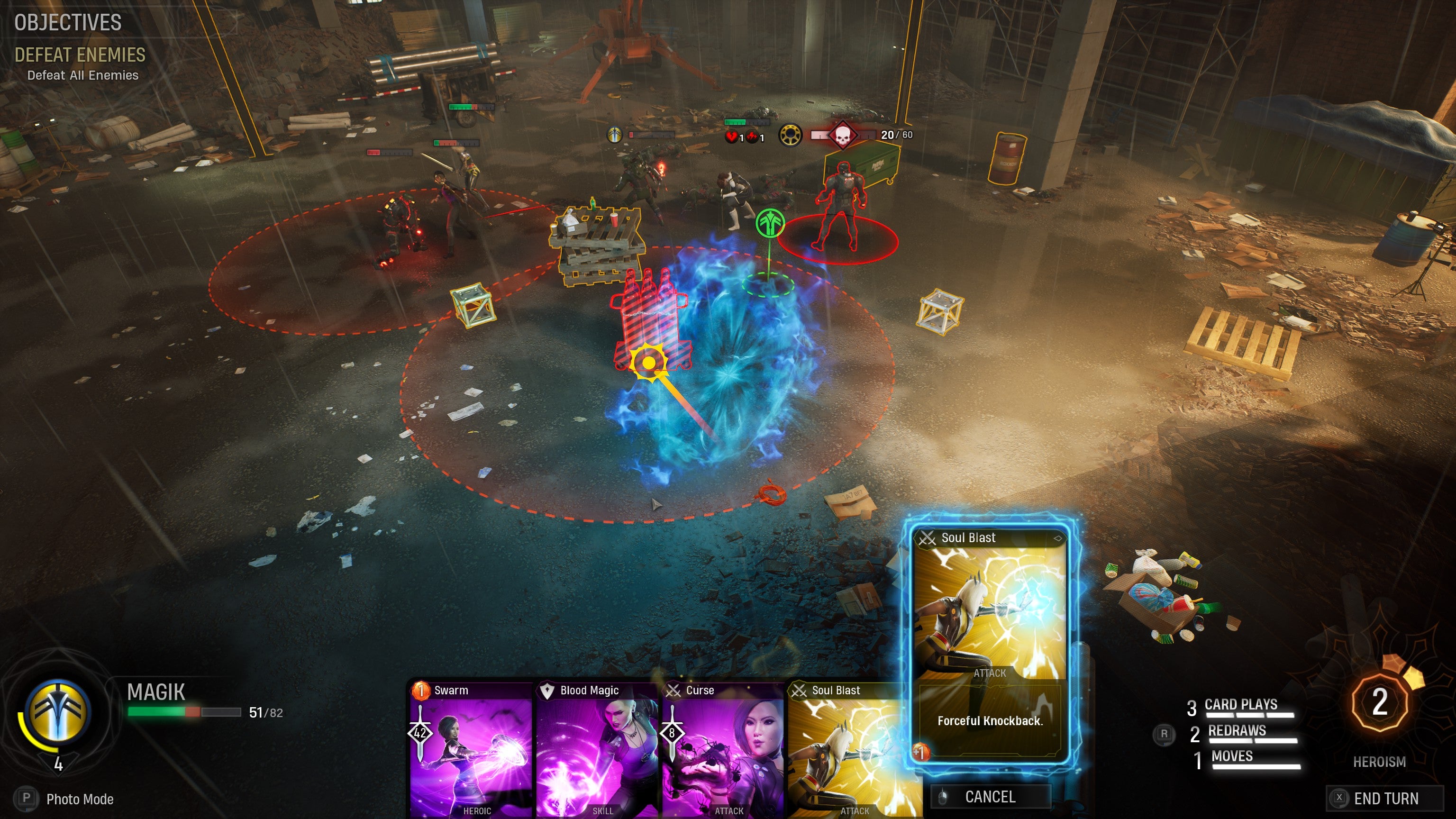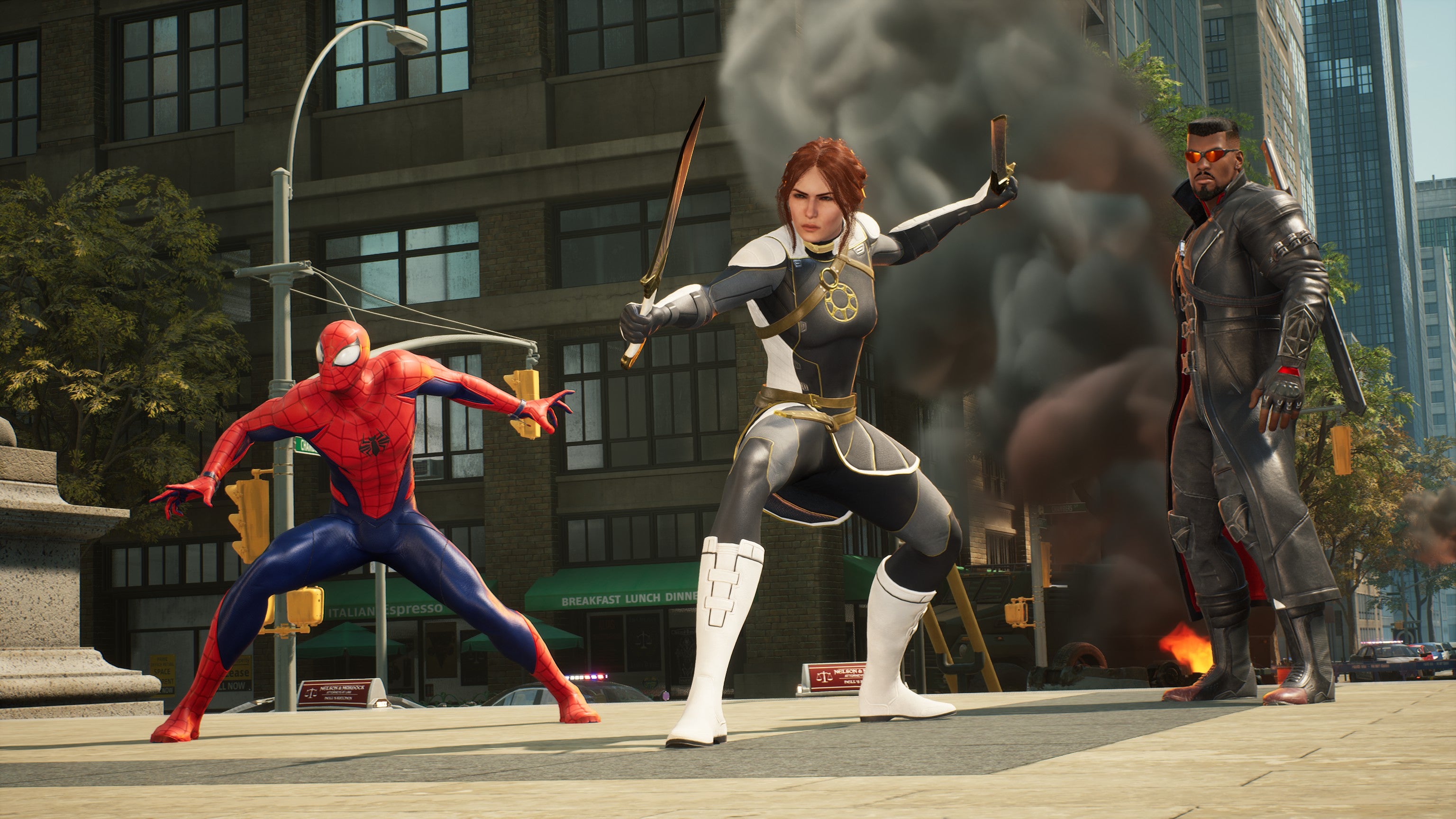Question is, by tipping the power scales in your favour like this, do you risk destroying that delicate balance of risk and reward? At first glance, it’s easy to think a more reliable set of heroes would end up dulling what made Firaxis’ XCOM games so special, but the result is something equally thrilling. Given how the Marvel machine has drawn in and chewed up so much singular creative talent in the wider MCUniverse, Firaxis emerging with their cred intact is nothing short of extraordinary. Not only have they endured their radioactive spider bite, they’ve come out bigger and better for it, creating not only the best Marvel game I’ve played, but one of the best superhero games full stop. The key behind both these things - strategy and the supes - lies in its tightly designed battle arenas. With cover removed from the equation, it paves the way for some brilliant Into The Breach-style puzzle boxes, where crowd control and manipulating enemy positions are the order of the day. You’re handed a set of tools, in this case a deck of cards drawn from the trio of superheroes you bring into battle, as well as a smattering of interactive objects on the map itself, but how you combine them into maximum hurt is very much up to you. Part of this is dictated by what cards you have in your hand. Each hero is able to bring eight cards into a fight, but you only get to play three from your entire deck in any given turn. Well, if you’re playing it strictly by the book, that is. While missions often see you clearing out enemy forces, they’re frequently peppered with other objectives such as retrieving or protecting precious artifacts, closing portals, biffing Hydra getaway vehicles and more - and as I explained earlier in the year in my Midnight Suns preview, more reinforcements will arrive at the end of every turn. It means there’s often a lot of pieces in play, but the joy of Midnight Suns is twisting and bending its ruleset to your advantage, seeing how far you can stretch a single turn before giving in and calling it a day. Quick cards, for example, refund your card play if you land a KO with it, while others become stronger if you use one of your limited redraw options on them. Iron Man’s whole deal is built around this idea of hacking the game’s own rulebook to power up his attacks, while former X-Men and current Midnight Sun member Magik can cast free portal cards to corral or knockback enemies to locations of your choosing, making them prime targets for, say, Captain Marvel to land a map-wide photon beam on them, or for Ghost Rider to tear up the map with his flaming Hell Ride. It’s the same kind of unembarrassed power flex that made Gears Tactics so enjoyable, turning that nervous energy of XCOM’s will-they-won’t-they into a more flashy frolic of strategic endurance. To further sweeten the deal, battlegrounds themselves are packed with painful opportunities, offering even more of the quick-witted improvisation that feeds its overarching superhero fantasy. The junction boxes you’d crouch behind in a more timid game are now crackling with live wires begging for a goon to be thrown into their open bellies, while lamp posts and cranes wait to be toppled onto enemy heads. Crates, aircon units and piles of wooden pallets can springboard heroes into the air so they can deliver those classic smackdowns from on high, and heck, you can even chuck stacks of Daily Bugle newspapers at their ugly mugs, too. Print is dying, so may as well drag some crims into the grave on its way out. Such feats aren’t available freely, however. To unleash special Heroic attacks and environmental flourishes you need to build up a Heroism level by playing basic attack and support cards, rekindling that age-old dilemma of risk and reward as you chew over what card to play next. The resulting strategy experience feels like a neat trade-off between the immediacy and improvisation of reacting to the hand you’re dealt in any given turn and having one eye on future potential; there’s no one trick you can over rely on (something I find often emerges in XCOM-alikes), but neither is it totally dependent on the in-the-moment optimisation that sometimes leaves Into The Breach feeling like a puzzle game with a ‘correct’ solution. It’s deftly done. Through all this special shoutout must go to Firaxis’ art and animation teams for bringing the core superhero fantasy to life. Every attack, special or otherwise, has been gleefully choreographed for maximum smugness, making excellent use of slow-mo, screen shake and sound design to really make it feel like you’re packing a superpowered wallop. It’s clear this is a team that really gets what makes Marvel tick, and nowhere is that more prevalent than when you’re out of battle and hanging out back at your base. Nestled in a handy little pocket dimension near Salem, Massachusetts, The Abbey is effectively the haunted, witchy equivalent of Mass Effect’s Normandy, providing a base camp to freely roam around in and chill with your fellow supes. You don’t play as any one Marvel hero here, though. Instead, Midnight Suns puts you into the lycra-fitted tights of The Hunter, an original hero jointly created by Firaxis and the comic book brains at Marvel, and whose mum also happens to be the big bad demon queen Lilith (awks). In classic fashion, her journey is one of light versus dark, and players can choose to bring these qualities to the fore through an extensive set of dialogue options. Happily, this isn’t simply a case of light equals good and dark equals bad. While the choices you make impact on the types of cards and abilities Hunter has at her disposal, the same tactics won’t necessarily apply to your superhero colleagues. For example, some actually appreciate you taking a more neutral stance in certain situations, while others take offence if you try to be too goody-two-shoes all the time, both in your everyday conversations and in your post-mission Fire Emblem and Persona-style one-on-one hang outs. (Alas, there’s no romancing to be found in the latter, but there are still fun little hints and digs to be had along the way. Case in point: at one point Blade starts a book club that’s clearly an attempt to impress Captain Marvel, and it’s arguably the cutest darn thing I’ve ever seen in my life.) It all adds up to give both its heroes and your interactions with them a welcome depth, especially when much of its story sees you playing peacemaker between the squabbling factions of the world famous Avengers and the younger upstarts of the Midnight Suns. Admittedly, there are moments when its team-wide divisions run the risk of derailing the fast and frothy fun of its turn-based battles - I found Midnight Suns’ ringleader Caretaker to be a particularly drab hang - but it rarely tips over into outright frustration. For the most part, Firaxis’ writers have a lot of fun with these characters. Their jibes and witty comebacks feel very much of a piece with their MCU counterparts, but crucially, they still feel retain their own distinct set of personalities - a gulf Square Enix’s ill-fated Marvel’s Avengers game never quite straddled. Do they allow you to form the same kind of attachments as your typical XCOM squad? Probably not. They can’t die, for starters, but that’s not to say there’s nothing to hold onto here. For all its daft quips and snipes, Marvel’s Midnight Suns really does go places in its script, tackling deep and sensitive subjects with surprising tact and nuance. I’m far from a Marvel cheerleader - the series lost me when I sat through eight minutes of credits to see Harry Styles and a CG leprechaun - but even I found plenty to get invested in here. That’s partly because the Abbey is also where you can jump into its broader XCOM-style strategy layer. Just, you know, with a fun Avengers twist. Doctor Strange is your chief researcher, unlocking new upgrades and abilities for everyone, Iron Man uses his technical nouse to crack open new card caches to add to your deck, while Blade runs the Abbey gym, letting you spar with fellow supes for stat and friendship bonuses and combining duplicate cards to make them more powerful. Captain Marvel, meanwhile, runs offscreen Hero Op missions, designed to net you even more rewards that can go back into strengthening your deck. Admittedly, it’s not going to trouble minds that have mastered XCOM’s meta-game layer, but it’s another good way Firaxis marries the popcorn accessibility of the subject matter to the expectations of a chewier genre. Together with its RPG elements, this social side of Marvel’s Midnight Suns scratches exactly the same itch as Fire Emblem and Persona did before it, making those quieter moments feel just as important as its turn-based battles. XCOM did that, too, of course, but you don’t need a sixth Spidey sense to see there’s a lot more going on here. It’s a more authored experience than seeing your grandma get punched in the face by a psi zombie in your customised XCOM squad, sure, but I think it’s okay to put your story in someone else’s hands when they’re as competent as this. Ultimately, XCOM still exists, is still inspiring plenty of other games and can still be returned to by Firaxis should they wish; I’m happy seeing them try something new and with considerable ambition. What’s important is that Marvel’s Midnight Suns resists the bloat that so often comes with that ambition, keeping its brain and brawn feeling lean and inextricably linked at all times. It’s a large and sprawling adventure, but there’s no ‘if’s, ‘but’s or ‘maybe’s about it. Percentages be damned: this is a guaranteed hit for Marvel and strategy fans alike.
